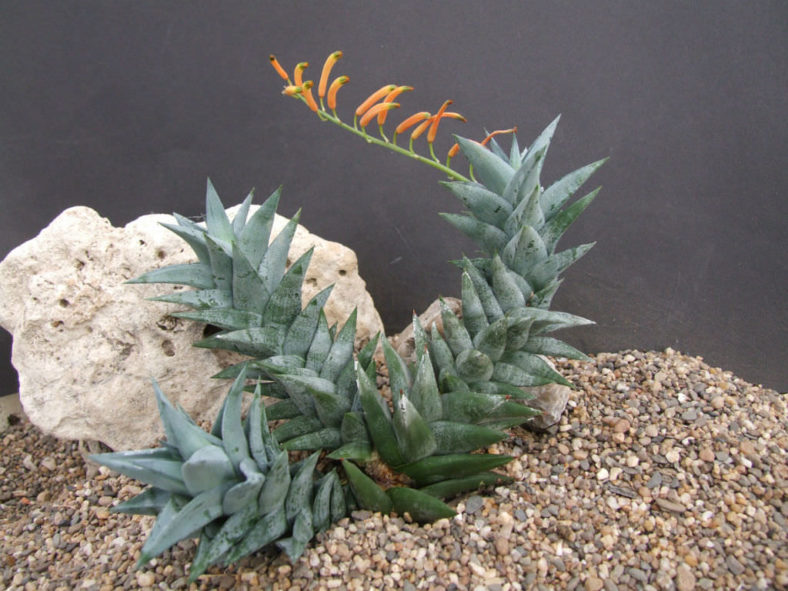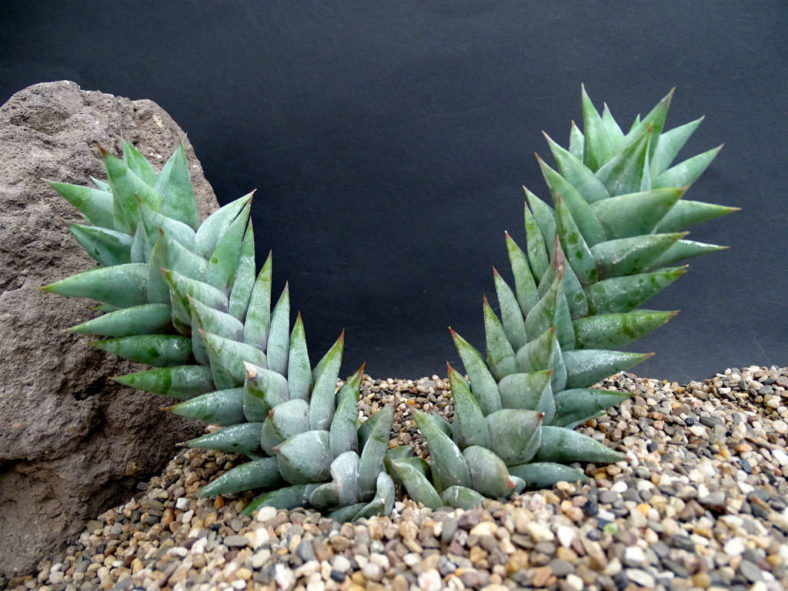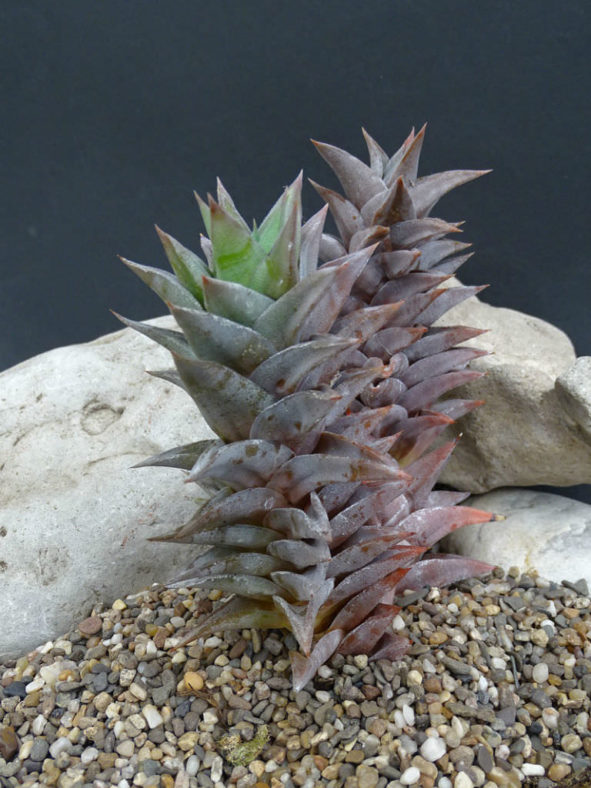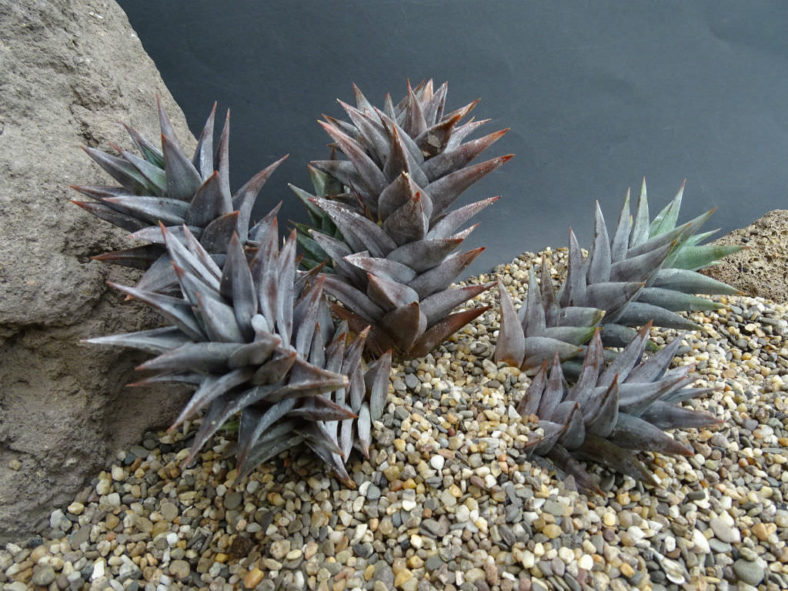Scientific Name
Astroloba rubriflora (L.Bolus) Gideon F.Sm. & J.C.Manning
Common Name(s)
Red-flowered Astroloba, Robertson Astroloba
Synonym(s)
Aloe rubriflora, Apicra rubriflora, Haworthia rubriflora, Poellnitzia rubriflora, Tulista rubriflora
Scientific Classification
Family: Asphodelaceae
Subfamily: Asphodeloideae
Genus: Astroloba
Etymology
The specific epithet "rubriflora (pronounced roo-bri-FLOR-uh)" means "red-flowered" and refers to the peculiarly-formed, red flowers with green tips.
Origin
Astroloba rubriflora is native to South Africa. It grows in rocky karroid flats and low hills in Robertson Karoo, Western Cape province.
Description
Astroloba rubriflora, formerly known as Poellnitzia rubriflora, is a small, sprawling succulent with slender stems and sharply-pointed, usually four-ranked leaves in spirally arranged rows. It produces offsets at and near the base. The stems are initially erect and become ascending as they grow, reaching 18 inches (45 cm) in length. The leaves are dark green to glaucous green, coated with a waxy layer, and take on a brownish hue when exposed to full sun. They are thick and stiff, with a concave or flat upper surface and a convex lower surface that is keeled toward the tip, measuring up to 1.6 inches (4 cm) long, 0.8 inches (2 cm) wide, and 0.2 inches (0.5 cm) thick. The keel and margins of the leaves are somewhat rough.
The flowers are red to reddish-orange with dark green tips and appear usually in summer in horizontal racemes on simple, slender stalks that can grow 20 inches (50 cm) long. They are tubular and can reach up to 0.8 inches (2 cm) long and 0.15 inches (0.3 cm) in diameter. The fruits are green, trilocular capsules that contain dark brown to black seeds.

Hardiness
USDA hardiness zone 10b to 11b: from 35 °F (+1.7 °C) to 50 °F (+10 °C).
How to Grow and Care
Astroloba plants are increasingly popular as succulent ornamentals due to the extraordinary beauty of their leaf structure. Some have intricate patterns of lines, margins, spots, and raised tubercles on their leaves. Nearly all of them display a crystal-like regularity in their leaf arrangement. This is not always apparent in wild plants, usually disfigured by their harsh habitat.
Astrolobas thrive best in cultivation when protected from full sun. However, They can become remarkably beautiful and ornate in a semi-shade environment with highly well-drained soil and gentle conditions.
Unfortunately, when conditions are not ideal, occasional random leaves can die, shrivel up, and go brown all along their stems. This is unfortunate because, as explained, plants' beauty comes from their intricate, crystalline patterns. However, this disfigurement can be avoided by keeping the plants in optimal, fertile conditions—growing steadily and sheltered from stress.
See more at How to Grow and Care for Astroloba.
Links
- Back to genus Astroloba
- Succupedia: Browse succulents by Scientific Name, Common Name, Genus, Family, USDA Hardiness Zone, Origin, or cacti by Genus
Photo Gallery
Click on a photo to see a larger version.


